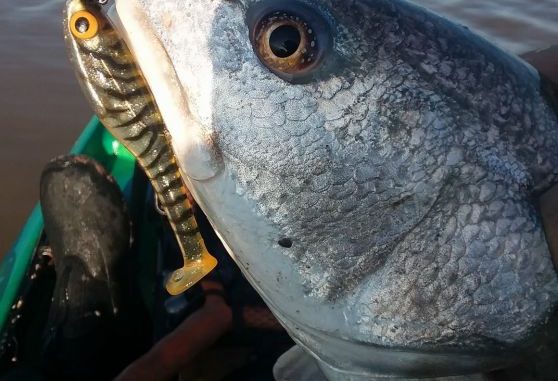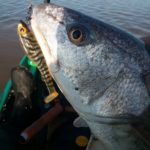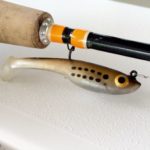
Meet Egret Baits’ ‘tough as hell’ shad imitation
Speckled trout and other saltwater species feed on shrimp and baitfish, shad, mullet, cocahoes and more.
Take away shrimp, which usually are in salty and brackish systems for only so long each year, and that leaves only the baitfish, a development that prompted many successful speckled trout fishermen over the past few years to request a baitfish-shaped soft plastic from Egret Baits. The company makes the wildly popular (among speckled trout and redfish anglers) Vudu Shrimp, which was followed by the equally popular Vudu Mullet.
“We get calls and emails all the time saying, ‘Why don’t you make a cocahoe?’ and ‘What are you going to do next?“ Egret Baits owner Ken Chaumont said.
With the shrimp side of the food chain covered, Egret set out to work on a baitfush lure.
So Chaumont and his team developed the Vudu Vixen, which is tough as nails and already has a proven track record on getting speckled trout to bite.
The 63-year-old outdoorsman, who has been in the artificial lure manufacturing business 34 years, pointed out shrimp are in the water for a relatively short time — but baitfish are always present.
“So we modeled it after shad. That’s the reason for the shad-style baits. When you look at the cocahoe, they’re everywhere,” he said.
“We’ve got another winner. I think this will be as big as the Vudu Shrimp.”
Durable construction
Just like Vudu Shrimp, Vudu Vixens, which hit the market in November, are made with almost indestructible TPE, a mix of rubber and plastic synthetic materials. The benefit of using thermoplastic elastomers is their ability to stretch and return to their original shape, thus creating a longer life and better physical range than other materials.
“We call it tough as hell. It’s tougher and more durable than soft plastics. It’s in a million products. TPE is a great product for the future of fishing,” Chaumont said.
Two other qualities are that TPE doesn’t melt, and paint doesn’t run or bleed when it is painted. Chaumont said one of the most ideal storage spaces for the lures is a Plano Pocket tacklebox.
The Vudu Vixen is 3 inches long, and has a built-in 1/4-ounce leadhead. A 3 ½-inch model should be on the market in June, he said.
There are two Vudu Vixens in each pack and they come in 14 colors armed with a sharp, strong hook, with a suggested retail price of $7.99.
“I believe you can catch 500 fish in one pack,” he said.
The first prototypes arrived from overseas this summer. All Vudu prototypes are pearl, so that is the Vixen color Chaumont and others fed speckled trout and other saltwater gamefish for half of 2017.
“We hit schoolies all year long,” he said. “On my line, one bait has been tied on 3 ½ months. I’ve caught over 200 fish on one bait — average-size trout, redfish and flounder.”
Ray Christy, Chaumont’s long-time fishing buddy who lives at Hebert’s Landing on the eastern shore of Big Lake, has caught more than 100 speckled trout on the Vudu Vixen he has been throwing since June, Chaumont said.
Another Louisiana angler with years of experience behind him has been wearing out the speckled trout with the new soft plastic out of Houma.
Capt. Bill Lake, a veteran charter guide who owns Bayou Guide Service, has been a longtime believer in Egret Baits and is sold on the Vudu Vixen.
“It’s a really nice-looking little bait, a little 3-inch shad. It’s a brand new product that’s tough as hell,” Lake said. “It’ll be a great bait to target fish (this winter.)”
Chaumont likes to fish the Vudu Vixen on 12-pound test monofilament line with a 10-inch long, 17-pound flourocarbon leader.
Chaumont said he is proud of “another key feature” on the Vudu Vixen: the lure’s eyes.
“We developed a painted eye so you can’t destroy it,” he said, noting the eyes glow. “Every Vudu Vixen has glow eyes.”
For more information on the Vudu Vixen and other Egret Baits, go to egretbaits.com or call (318) 256-6904.




